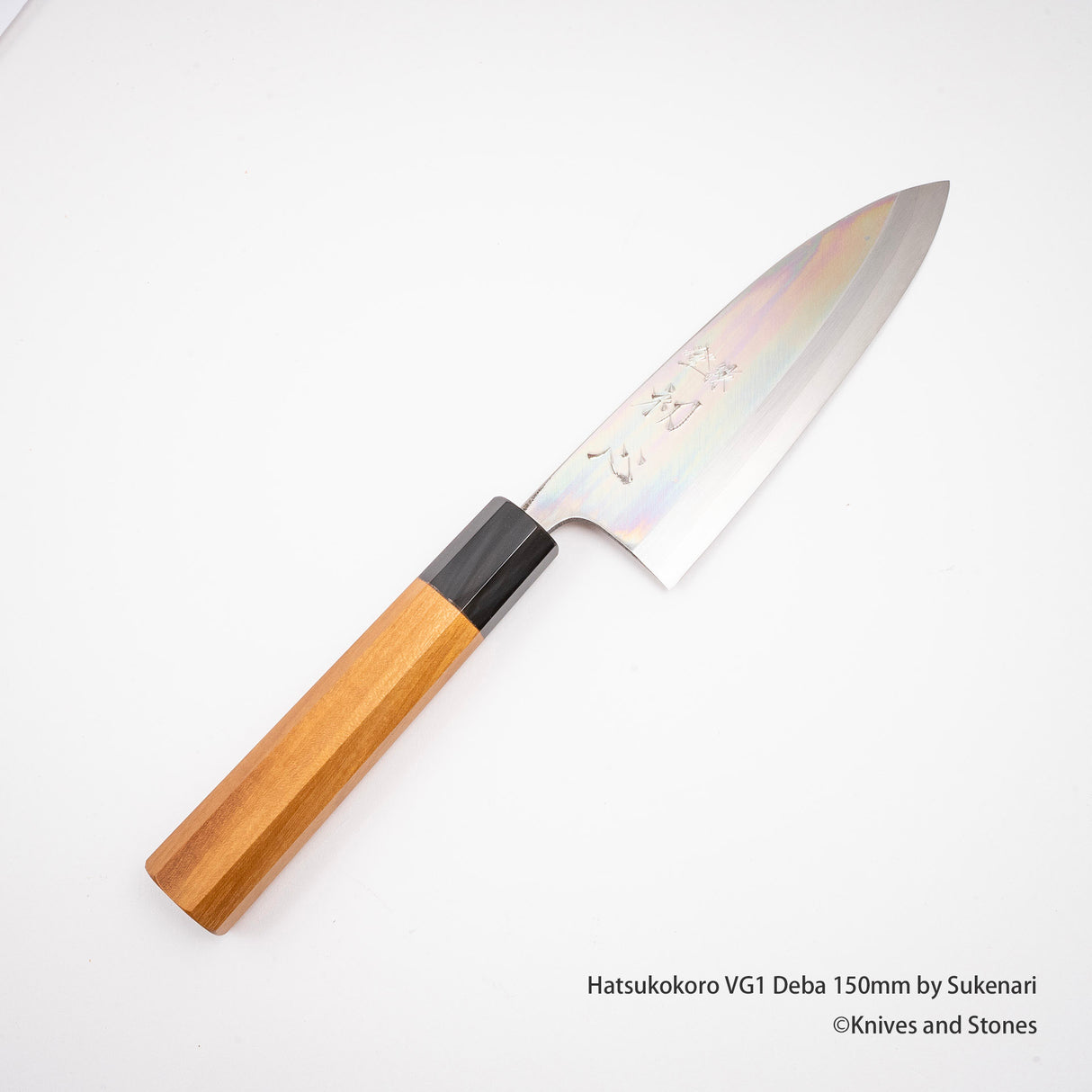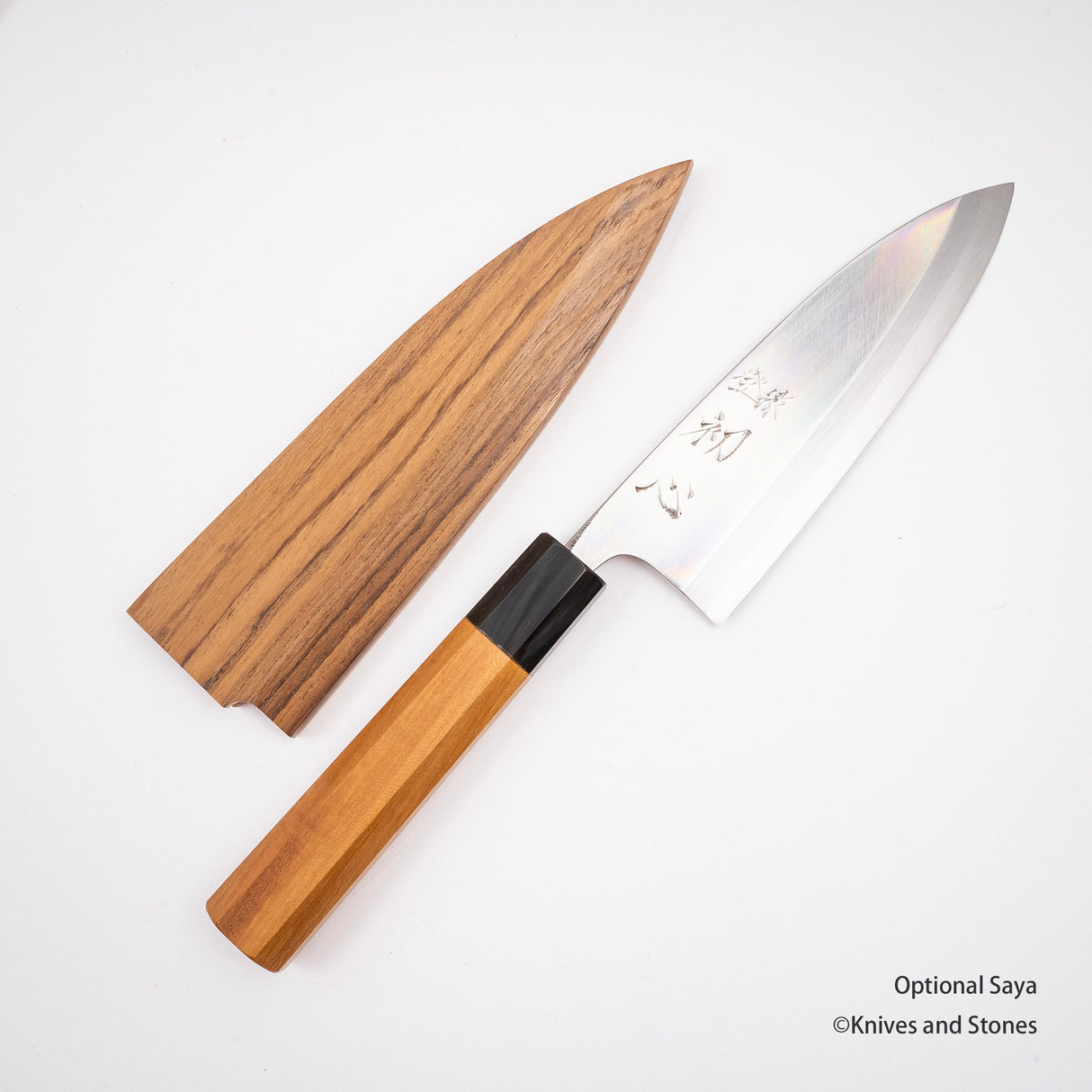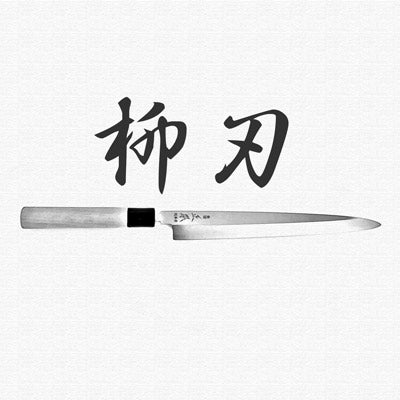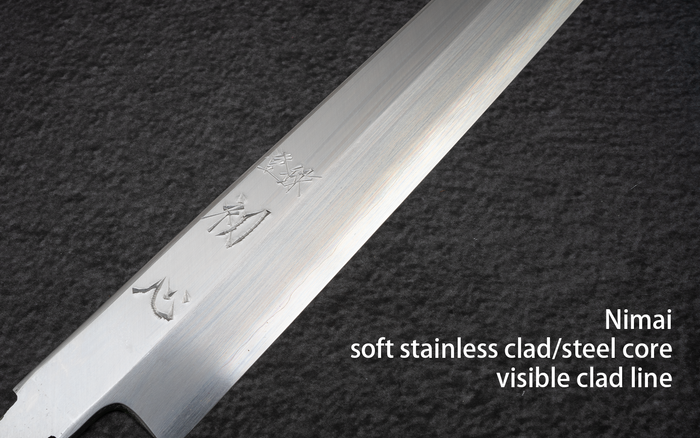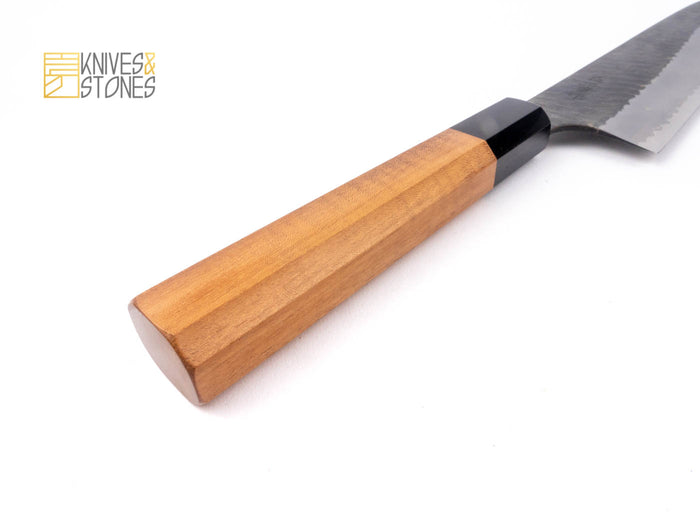Hatsukokoro | 庫存單位:
HT-HSVG1SK-DE150
初心 VG1 Deba 150mm by Sukenari
售價
$5,323.00
正常價格
$6,262.00
單價
/
不可用
初心 VG1 Deba 150mm by Sukenari 已缺貨,一旦有貨就會出貨。
無法載入取貨日期
Detailed Specifications
| Line | 初心 By Sukenari VG1 |
| Profile | 柳刃刀 |
| Bevel Type | 單斜面 |
| Weight | 207 g | 7.3 oz |
| Edge Length | 295 mm | 11 39/64″ |
| Heel Height | 33 mm | 1 19/64″ |
| Width @ Spine | 3.7 mm | 9/64″ |
| Width @ Mid | 3.1 mm | 1/8″ |
| Width @ 1cm from Tip | 1.1 mm | 3/64″ |
| Steel | VG1 | 不鏽鋼 |
| Blade Construction | 二枚 - 不鏽鋼夾層 |
| Hardness (HRC) | 58 - 61 |
| Surface Finish | 磨光 |
| Handle | 八角柚木黑色口輪 |
| Region | 戶山 |
| Best for |
|
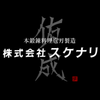
| Pros | Cons |
|
|
|
Care Instruction
- Don't cut hard things! Japanese knives are brittle so bone hacking is a NO NO!
- Wash with neutral detergent after use, and wipe dry;
- Please don't wash knife with dishwasher, it will damage the wood handle;
- Be careful not to leave the knife close to a heat source for a long time;
- It is a lot more dangerous to cut with a blunt knife than a sharp knife!
- It is best to sharpen a Japanese knife regularly on a waterstone. Error: Steel nature unknown

